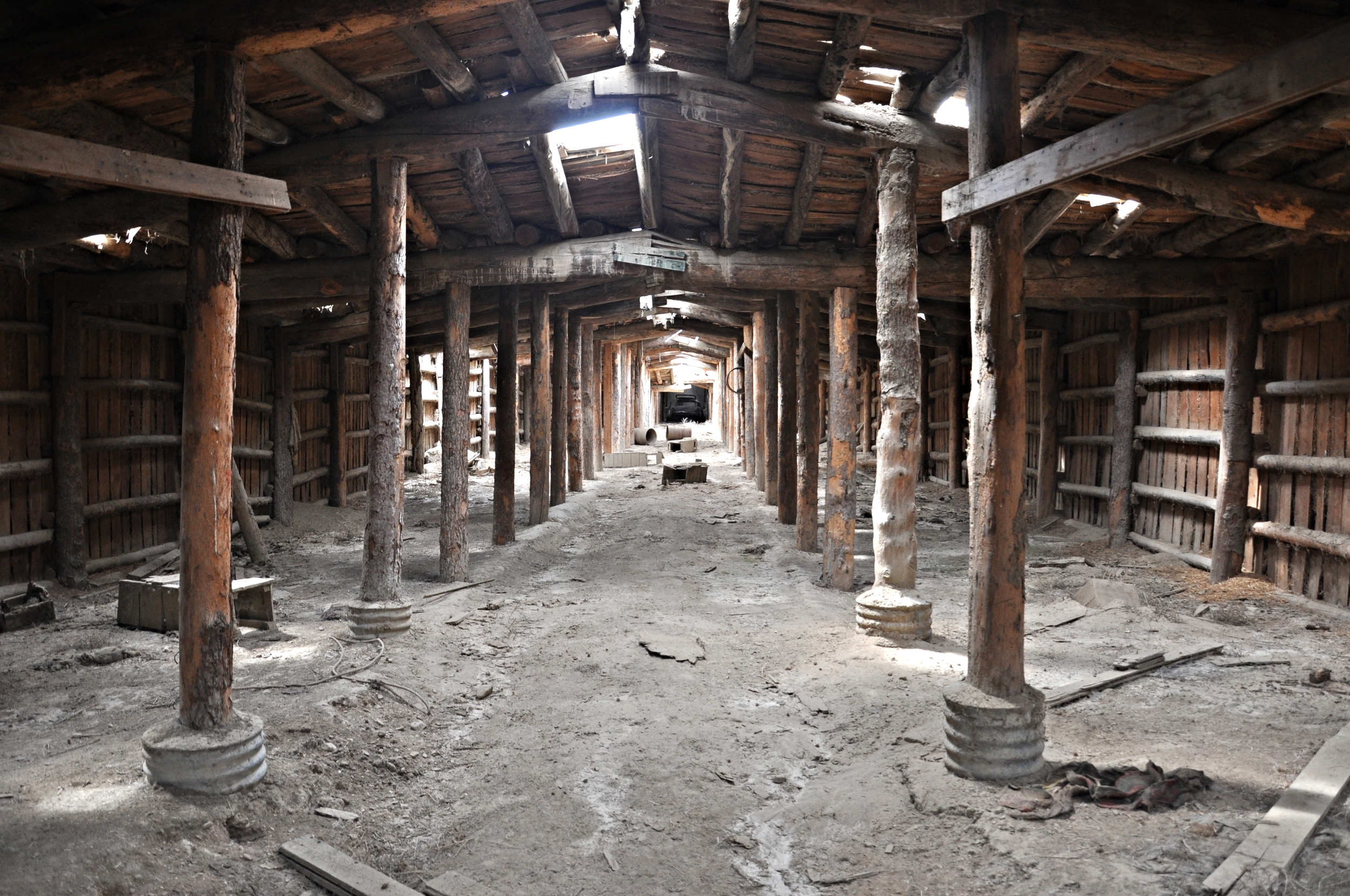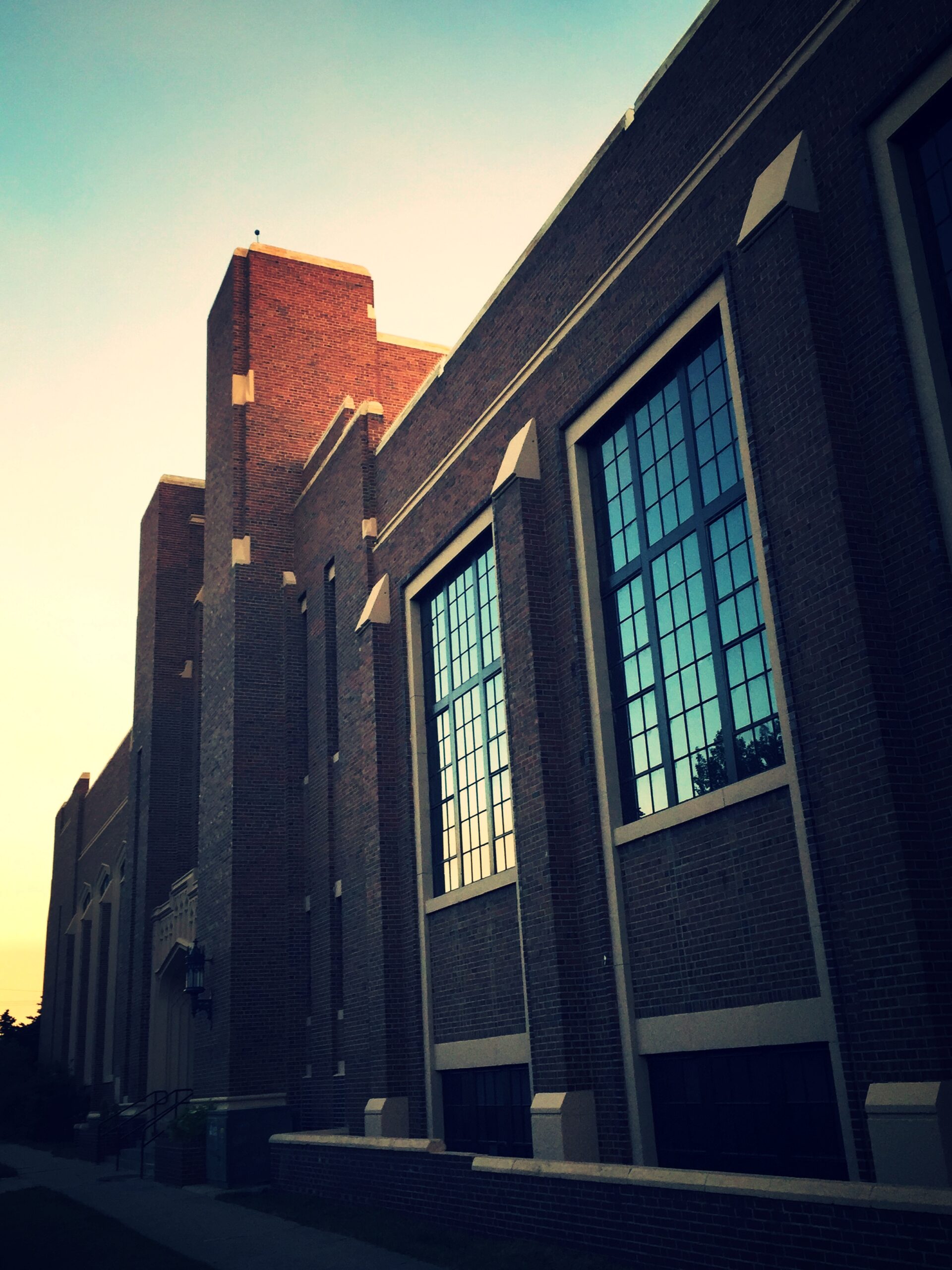Historic Preservation at Heart Mountain
By Luke Anderson
July 6, 2016
“The Foundation was turning a site of former injustice into a site of community building, and I wanted to be a part of that.” – Brian Liesinger
Brian Liesinger is the executive director of the Heart Mountain Wyoming Foundation (HMWF). Brian has a background in education, communications, and journalism. Most recently, he worked for the University of Minnesota in the field of international education before coming to Heart Mountain. In fact, he likely wouldn’t even be in the historic preservation business if it weren’t for Heart Mountain.
“My grandparents homesteaded in Wyoming. They were both veterans of WWII and got married in San Francisco. My grandfather fought more or less alongside a Japanese-American regiment in Italy. As a result, he had an appreciation and understanding of how important the place was.”
Brian’s grandfather picked up the school bell from the camp and took it back to homestead. Brian grew up with it and understood more and more about it as he got older, which gave him an early understanding of the meaning of the camp. Brian’s personal connection to the site makes his position as executive director a position of passion for him. It is a position in which Brian finds himself to be a historian one day, a janitor the next, and a fundraiser the day after. He is as much the Foundation’s CEO as he is its biggest cheerleader.
Preservation is hard work, but without passion, it is impossible work. Such passion is necessary to achieve everything that the HMWF has accomplished since its creation in 1996. HMWF was formed by a group of former incarcerees and families of former incarcerees from all over the country who were forced to live at Heart Mountain, primarily from Cody and Powell, Wyoming, as well as California. The foundation received its nonprofit status in 1997, and has since defined the direction of their organization through their mission statement:
“The mission of the Heart Mountain Wyoming Foundation is to:
• Preserve and memorialize the Heart Mountain World War II Japanese American Confinement Site and the stories that symbolize the fragility of democracy;
• Educate the public about the history of the illegal imprisonment of Japanese Americans at Heart Mountain during World War II and its impact on the Big Horn Basin; and
• Support inquiry, research and outreach to highlight the lessons of the Japanese American confinement and their relevance to the preservation of liberty and civil rights for all Americans today.”
The physical preservation of Heart Mountain began with the reconstruction in 2003 of the Honor Roll that once stood in the camp. The Honor Roll recognizes more than 800 Heart Mountain residents who served in the military. In 2005, a walking tour of the former camp was dedicated in the memory of Setsuko Saito Higuchi, who was one of a group of former internees that had envisioned the construction of an educational facility devoted to telling the stories of those who called Heart Mountain home during World War II. Higuchi’s dream came true in 2011 when the Heart Mountain Interpretive Center opened its doors. The Interpretive Center is dedicated to passing on the story of the camp to future generations, which, as Brian Liesinger believes, is important for preventing such a mistake in the future. The Center includes a museum, archive, and a replica of one of the guard towers that would have dotted the landscape within the camp.
The site of the former concentration camp is very large. Its present-day ownership is broken up between multiple parties. The Bureau of Reclamation owns and manages part of the site, including the immediately recognizable 80-foot tall brick chimney. This site was designated as a National Historic Landmark in 2006, joining the likes of other iconic historic landmarks in Wyoming such as Independence Rock, Old Faithful Inn, and Medicine Mountain. The chimney has undergone stabilization work to prolong its tenure standing watch at the top of the hill for years to come. Adjacent to the Bureau of Reclamation land on the former site is the land owned and managed by HMWF. The HMWF land was once peppered with 450 barracks and other civil utilities. The former main entrance to the camp, where internees would arrive by train and walk to their barracks, is also on HMWF land. After the war was over, the military allowed veterans to dismantle and salvage what they could from the camp, and the rest was sold. As a result, no barracks remained at the site for decades, and all that was left were a few ghostly outlines of their former foundations.
Preservation at Heart Mountain has largely consisted of tracking down any remains of the original site and returning them. Brian Liesinger’s grandfather took the school bell from the camp with him to his homestead after the war. Brian’s parents recently returned the bell to Heart Mountain from South Dakota. Heart Mountain has also recently enjoyed the return of a complete barrack as well as an original root cellar. The barrack had been used by the University of Iowa as a field school facility for fifty years. The university was going to demolish the barrack, but instead donated it to HMWF. The foundation then raised money to transport the barrack in pieces over 80 miles from Shell, Wyoming to the original site. The barrack was placed on an existing foundation and reinforced with modern concrete. The barracks were not built to last so long, making it remarkable that the donated barrack from Shell is in such good condition. It is a good example how the continued use and maintenance of a building can keep any structure in good condition over a long period of time. HMWF received the Leadership in History award from the American Association for State and Local History for their preservation of the barrack.



 View of original root cellar. Courtesy Heart Mountain Wyoming Foundation.
View of original root cellar. Courtesy Heart Mountain Wyoming Foundation.

